LIVING RIVER WALLS: IMPROVING BIODIVERSITY AND MITIGATING THE EFFECTS OF URBANIZATION IN THE RIVER THAMES
By: Jens Haendeler, Alex Ioannou
Week 1
The World Health Organization predicts that a majority of the world's population will live in urban areas by 2017. Rapidly progressing urbanisation and land use change result in river habitats that are lacking biodiversity and aesthetic qualities. These effects will affect not only the local fauna and flora but everyone living the affected neighbourhood.
Our research project - living river walls - will mitigate the effects of urbanization. We are proud to have been picked by the Students' Union and the Whole Earth! Fellowship program to extend our research and produce a trial panel.
It is our vision to inspire the improvement of river systems in urban agglomerations in the UK and elsewhere.
We will blog weekly updates to keep you informed about the progress. Should you have any questions or if you would like to share your thoughts with us please do feel free to contact us at any time.
(Image 1: Site photograph showing a typical London river wall lacking biodiversity, Image Courtesy: Jens Haendeler)
(Image 2: LI health diagram, Image Courtesy: Landscape Institute)
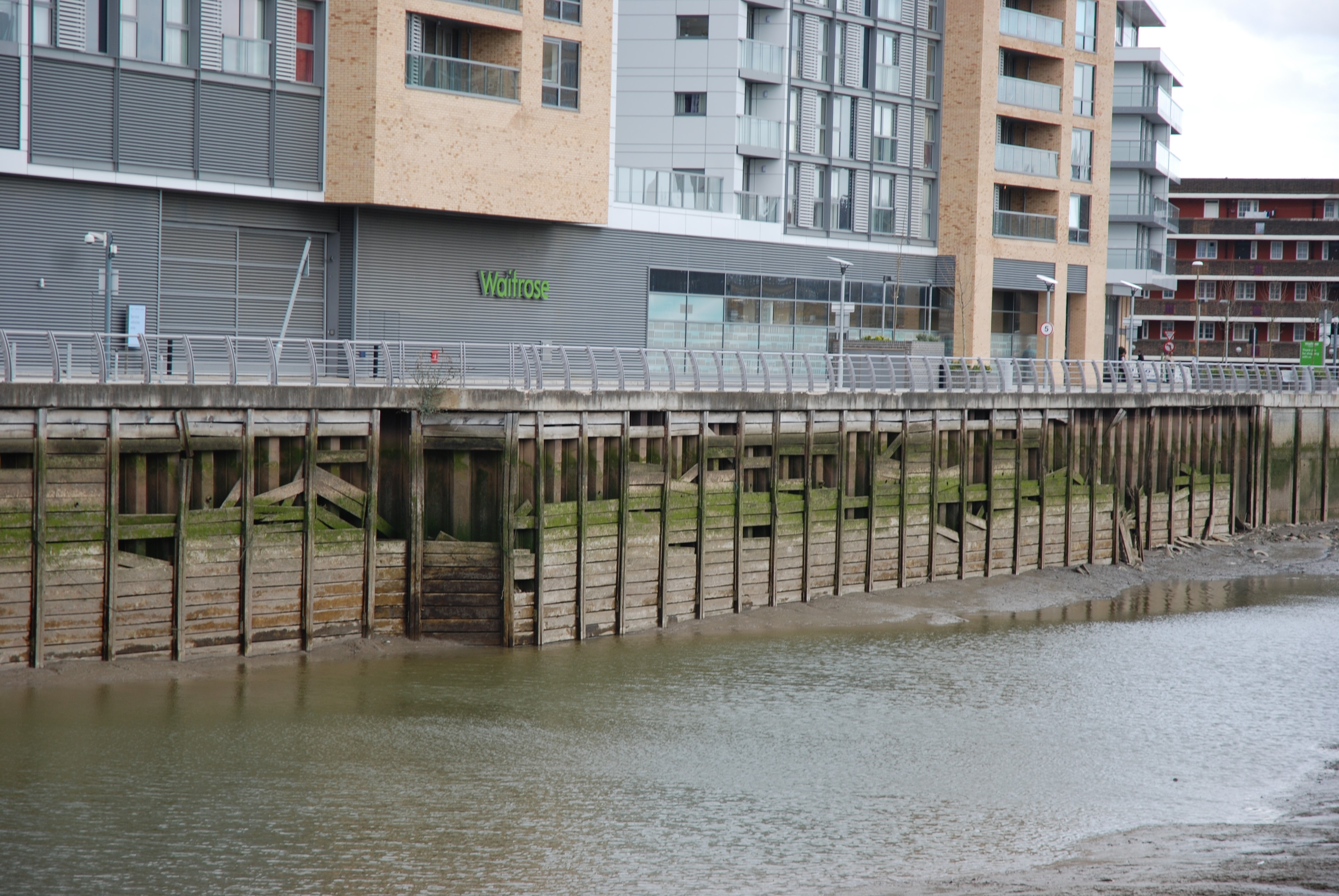
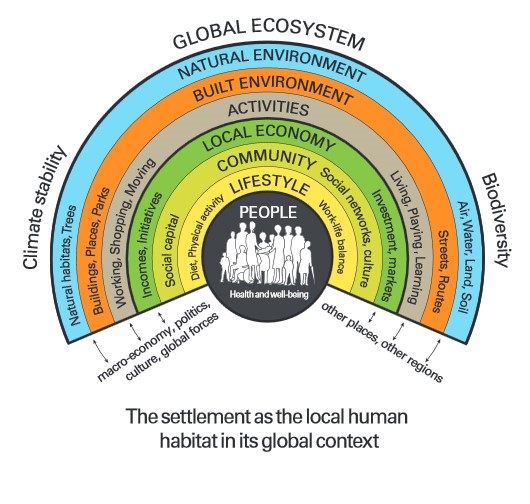
Week 2
We are enthusiastic about our project and very excited. However, in order to ensure our test panel works the way we want it to work we need to focus on the basic details. Generally speaking there are three key areas we have to get right: the metal structure and its fixings, the vegetation substrate and the choice of plants. This week we focused on outlining the requirements for both, the metal cage and choice of plants. We looked at natural salt marsh habitats and it's naturally occurring vegetation and subsequently put together a list of plants that would potentially grow in intertidal conditions in Greenwich.
Our next step is to inquire with nurseries and stockists in the UK to make sure that the plants we want are actually available. We outlined our requirements for the metal cage structure and will contact several metalworkers next week in order to get some practical advice.
We will continue to look at the details of our project and draw up a construction detail over the course of the next week. An actual drawing will help to communicate our idea with main stakeholders and potential suppliers.
(Image 1: Photomontage of living river wall at Deptford. Image Courtesy: Jens Haendeler)
(Image 2: Animated GIF of an intertidal salt marsh (image courtesy public domain, http://www.noaa.gov)
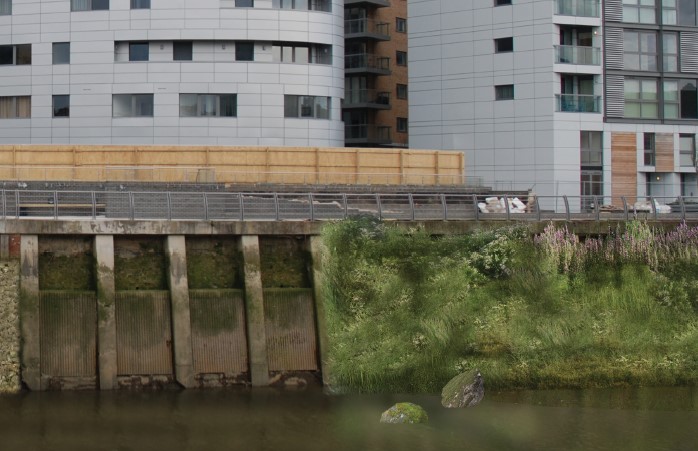
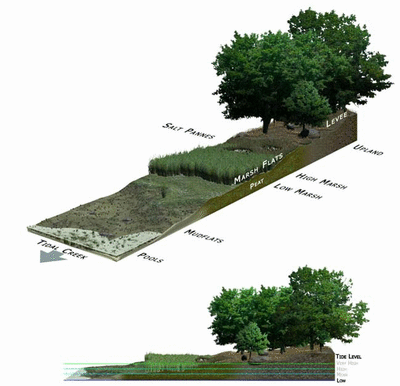
Week 3
This week things got real. Alex and I explored the Thames foreshore in order to find a suitable spot for a possible trial run. Amongst the shortlisted locations were Deptford Creek, the foreshore east of the University of Greenwich and a houseboat over in Deptford.
The foreshore is owned by the Crown Estates but The Environment Agency and the Port of London Authorities are also important partners we will have to liaise with. We've started to pencil in an event on the 3rd of December in order to mark the completion of our prototype and we also aim to team up with our colleague Daisy who works on another Whole Earth Fellowship Program related to landscape architecture, London-Under-Sea. We will keep you up-to-date.
We've also finalised a majority of our detailed drawings for the metal structure and sent our design off to the metal workers. It will be ready to be picked up very soon. We get excited as ideas start to turn into reality.
(Image 1: Thames foreshore at low tide. Image Courtesy: Jens Haendeler)
(Image 2: Steel buckets which will be used for the panel structure. Image Courtesy: Jens Haendeler)
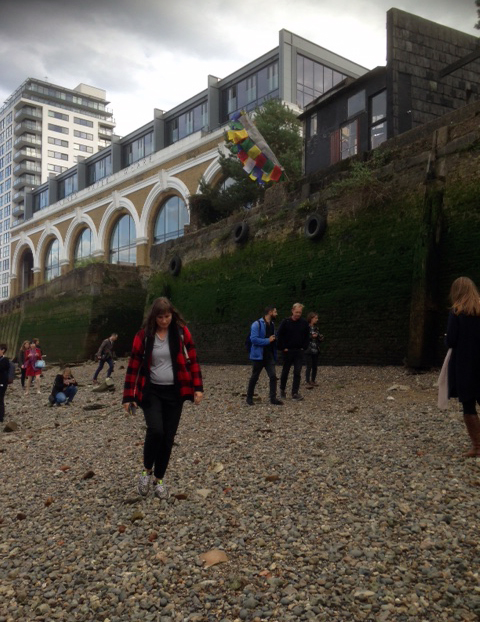
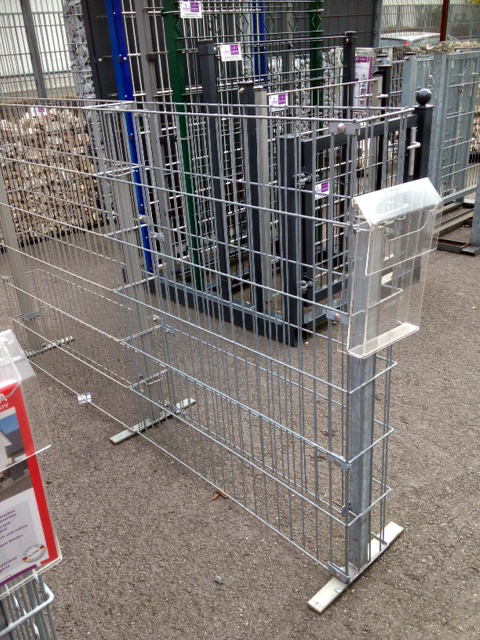
Week 4
About the planting material
In this week’s blog entry we will focus on the planting material of our living river wall. There are two ways to approach the planting of living river walls: a) through natural colonisation, or b) through a coordinated planting with pre-grown plants.
For our research project we have agreed to use pre-grown plants, preferably delivered as plugs rather than in P9 containers, in order to design more controllable vegetation. This vegetation should, as far as possible, replicate the vegetation profile that would exist along a transect of a natural river bank in this area. The planting will be located on the vertical axis to correspond to this profile and relating the plants to the rise and fall in tides as would occur along a natural river bank transect.

Different species have different needs and preferred conditions. Meeting those conditions and specifying the right plants for the right place is essential in order to create a successful intertidal scheme (Brooke and Landin et al., 1999). The most important concept behind the planting hierarchy of the living walls, but also of intertidal planting beds, is to emulate the gradient of plants that would be found along a natural transect under natural conditions in a similar area with similar conditions. Thus the planting would comprise marginals, intertidal plants and aquatic plants. According to Doody (2008), and Brooke and Landin et al. (1999), additional important physical conditions which have an influence on plant choice include:
- exposure to wind and waves
- salinity
- the sub-surface wave run up
- tidal scour
- condition of silt (grain size and level of oxygenation in particular)
- level of silt accumulation
- slope of the bed
- elevation and position within the intertidal range
References:
Doody, J.P. 2008. Saltmarsh conversion, management and restoration. Dordrecht: Springer.
Long, S. 1993. Saltmarsh Ecology. Cambridge: Cambridge University Press.
Brooke, J., Landin, M. and Meakins, N. 1999. The restoration of vegetation on saltmarshes. Environment Agency.
Week 5 & 6
Intertidal zones
As the river Thames at Deptford and Greenwich is still tidal we need to design our living wall in a way that it caters for the needs of all different intertidal zones.
Taking inspiration from Brooke et. al. (1999), as well as from Haslam (1978) and Adnitt and Brew et al. (2007), an intertidal riverbank can be roughly divided into three zones: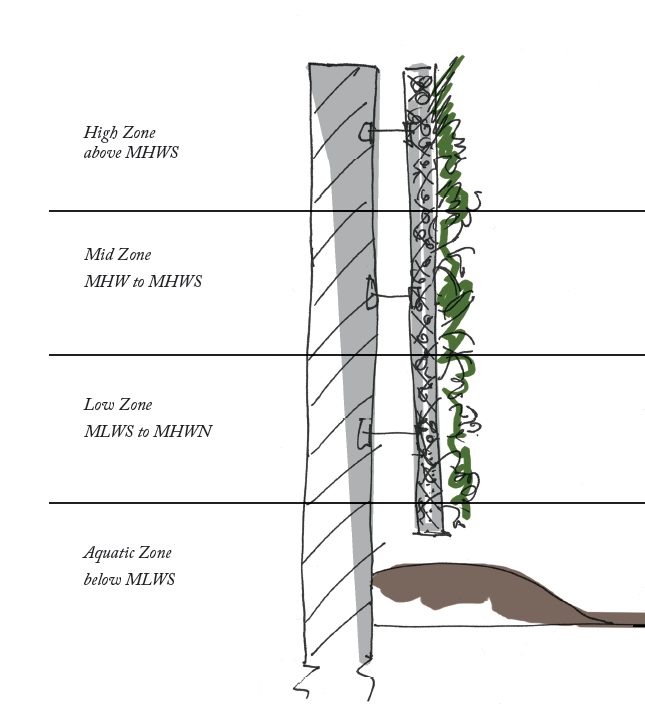
Low zone - below MHWN
Mid zone - MHW to MHWS
High zone - around or above MHWS
Because each zone is characterised by distinct physical and chemical conditions each zone only supports a limited range of plants. Further to the three zones above there is a fourth group: aquatic plants are plants that are regardless of the tidal state partially or entirely below the water level. There are four groups of aquatic plants:
- plants with leafs and shoots above the water level
- plants with leafs above the water level
- free floating plants
- fully submersed plants
However, most available plants were only tested in freshwater river habitats and have not been grown in conditions similar to those at Deptford Creek and Greenwich.
References:
Brooke, J., Landin, M. and Meakins, N. 1999. The restoration of vegetation on saltmarshes. Environment Agency.
Haslam, S. M. 1978. River plants. Cambridge: Cambridge University Press.
Adnitt, C., Brew, D., Cottle, R., Hardwick, M., John, S., Leggett, D., Mcnulty, S., Meakins, N. and Staniland, R. 2007. Saltmarsh management manual. Bristol: Environment Agency.
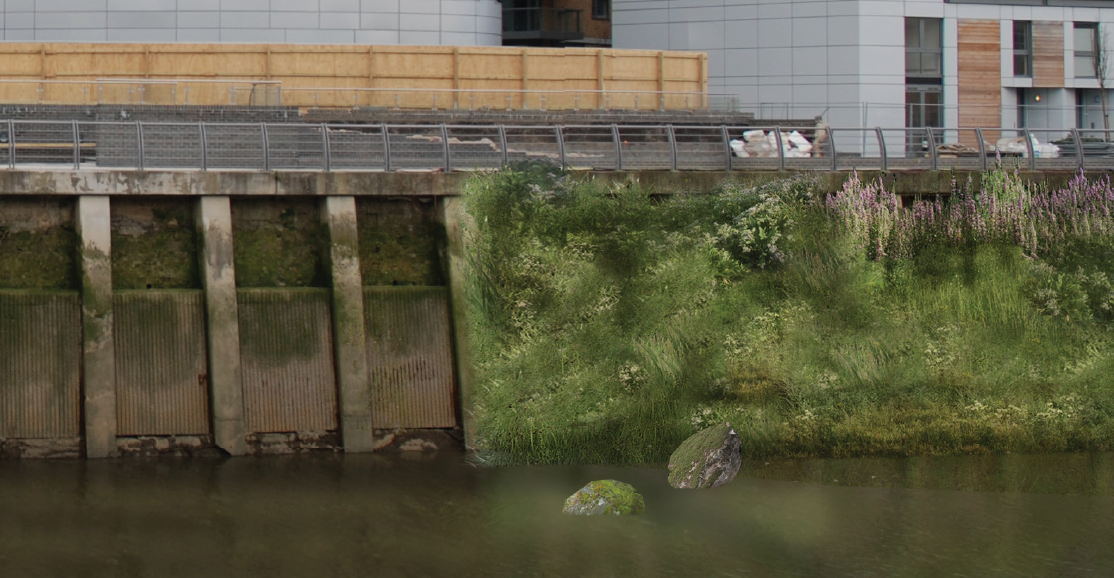
Week 7
Reflections
The Whole Earth Fellowship was a brilliant experience. Jens and I, throughout the process, have reflected on the great opportunity which we have been a part of. The Fellowship programme has allowed us to have a platform from which we could project our ideas and aspirations. Developing the Living River Walls concept has been such a challenging and fun undertaking. The funds received allowed us to materialise our thoughts and bring the Living Walls concept into the physical. The support which we have been provided with, by both the Green Ambassador (Anton Sentic) and University of Greenwich staff (Benz Kotzen), has been fundamental to the realising of the project.
Week 8
Next steps
Having successfully assembled and finished our prototype we now take a step back and look at what we have achieved from a distance. We have all the parts together: a metal cage, the substrate, the fixings and background research that supports our project. We are very optimistic that our project will work. However, we are almost certain that we would face further problems and issues that would arise as we were to install our prototype in the river Thames. Therefore we have decided to first create a 1:1 mock-up prior to installing the panel in the Thames. The mock-up will allow us to study the effects the tide will have on both the plants as well as the substrate. Understanding how the substrate behaves under these conditions will be key to provide a design that is long-lasting and sustainable. We will start working on our trial mock-up early 2016 and if you are interested in our work please do drop us an e-mail.